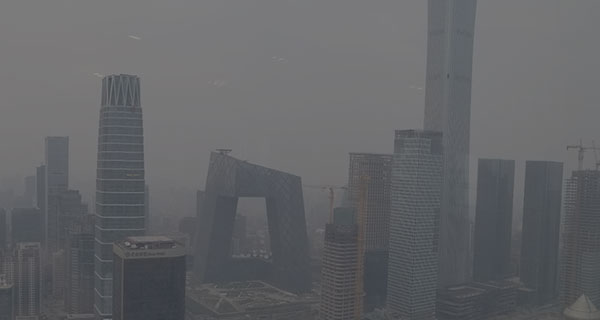 China’s war on air pollution will lead to a big win for the high-grade iron ores produced abundantly in Canada’s Labrador Trough region.
China’s war on air pollution will lead to a big win for the high-grade iron ores produced abundantly in Canada’s Labrador Trough region.
Chinese President Xi Jinping is pushing to improve air quality. That has created an opportunity for Canadian iron ore projects to enter the market, offering an alternative to lower grade product that contains higher impurities.
China’s post-2016 supply side reforms have meant that inefficient, highly-polluting blast furnaces have been replaced with larger units. The shift also eliminated illegal substandard steel production and toughened pollution standards. Steel mills that meet the country’s ultra-low emission standards won’t be subject to production restrictions.
Lower-grade ores with higher impurities generally require more coking coal, which is a key ingredient in blast-furnace steel manufacturing. So higher-grade ores help steel mills reduce harmful emissions. The use of higher-grade ores also reduces the hot metal conversion cost as more iron units enter the blast furnace.
This has led to an iron ore price gap that didn’t exist prior to China’s environmental crackdown. Back then, premium-grade iron ore was priced roughly the same as lower-grade ores that predominantly came out of Australia, one of the largest iron-ore producing regions in the world. Not anymore.
Not anymore.
Although a relatively small player in the seaborne market, Canada produces some of the highest-grade, cleanest iron ores in the world. More than 90 per cent of that iron ore is produced in the Labrador Trough region, which straddles the border between Québec and Newfoundland and Labrador.
The products from this region are not only recognized for their high iron content, they’re also renowned for their ultra-low levels of impurities. That makes them a very attractive value proposition for steelmakers who seek to strike a balance between productivity, profitability and emissions.
Between the start of 2016 and 2018, the premiums commanded by the 65 per cent Fe and 66 per cent Fe indices used for iron ore have risen to record highs. The gap between the benchmark 62 per cent Fe and the high-grade iron ores that are 65 per cent or higher iron content has increased threefold in this period. The premium reached a record high of 45 per cent in July 2018 and now sits around 15 per cent.
Higher-grade iron ores diverging in price from the lower grade has renewed interest in companies developing projects in the Labrador Trough. One such company is Alderon Iron Ore Corp., a TSX-listed development stage company that has restarted its Kami Iron Ore Project in the Labrador Trough after putting it on hold when iron-ore prices tanked in 2014-15.
If strict air pollution laws in China continue to evolve at present pace, the quality of life and air pollution experienced by more than a billion people will be transformed for the better.
| Mark Morabito, @mjmorabito
Last year, Alderon saw the return of Tayfun Eldem as president, CEO and director, a role he held from 2011 until iron-ore prices fell in 2014-15. Since returning, he has proven to be the perfect person to implement a strategic plan to realize the massive economic potential of Kami project for Québec, Newfoundland and Labrador, and all of Canada.
Given that the handful of high-grade iron ore producers with production and revenue are already trading at high values, investors may want to consider companies that are still in the development stage but are close to commercialization, while offering exposure to the Labrador Trough.
“Kami is a rare development opportunity. It offers more upside to investors because it is situated near three producing iron ore mines but has yet to start production,” said Tayfun. “It’s ready to go but for the final phase of financing, which we are currently in the process of raising.
The ultra-low impurity levels found in iron ore from Kami make its concentrates ideal for blending with ores with higher levels of contaminants like alumina and phosphorus. This allows Chinese steelmakers to improve the overall quality of the blend fed into their blast furnaces, striking the delicate balance between quality and input cost.
Investor interest is returning to iron ore, primarily for producing assets or near-producing assets. That’s what Tayfun found in meeting with investors since the beginning of January in order to raise the US$982.41 million needed to develop the mine. So far, up to C$220 million has been committed through existing agreements with its joint venture partner the HBIS Group, China’s second largest steelmaker.
“Alderon’s strategy is to look for financing through both traditional and non-traditional sources,” said Alderon CFO Kate-Lynn Genzel. The rest will come from strategic partnerships, project finance, and institutional and retail investors.
The risk of the Kami project has been virtually eliminated. It’s been released from environmental assessment and is practically shovel-ready, pending finance. Alderon has secured the key regulatory approvals and mining and surface leases. They have 100 per cent of the production sold and concluded the majority of their stakeholder agreements.
With the drive for clean air in China, the uptick in prices and increasing demand for high-grade iron ore, we should see a brighter spotlight shining on Canadian iron-ore production from the Labrador Trough.
Optimism in the iron-ore market opens a window to finance the Kami project. And the Labrador Trough = stands to benefit significantly from the boom in high-grade iron ore.

Canada’s Labrador Trough region, which straddles the border between the provinces of Québec
and Newfoundland and Labrador.
Mark Morabito is chairman and CEO of King & Bay West Management Corp. and the chairman of Alderon Iron Ore Corp.
The views, opinions and positions expressed by columnists and contributors are the author’s alone. They do not inherently or expressly reflect the views, opinions and/or positions of our publication.



